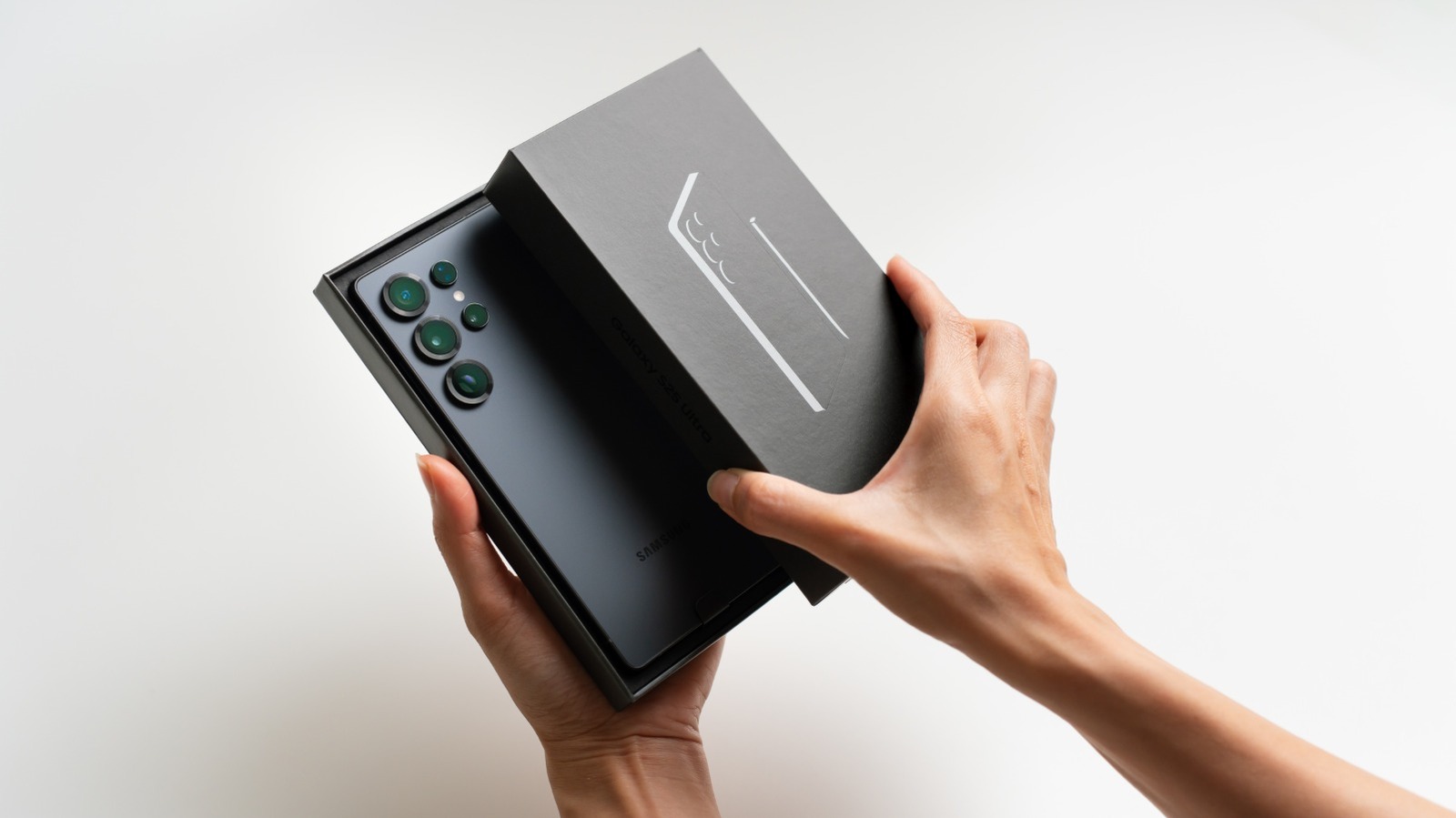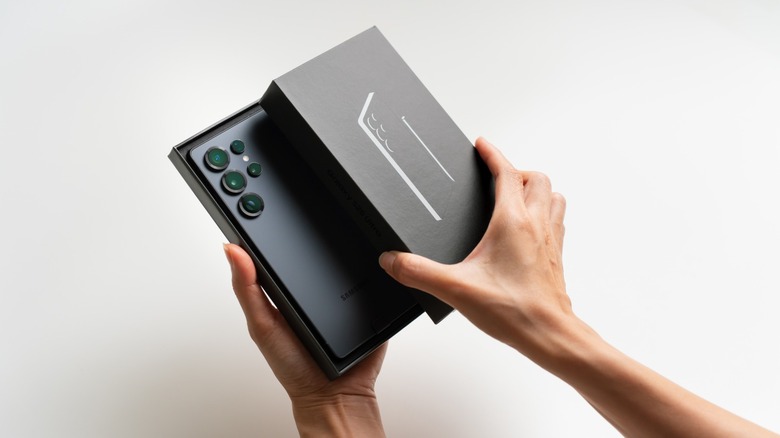 umitc/Shutterstock
umitc/Shutterstock
Unlike iOS, which sees only a curated selection of iPhone releases each calendar year, the Android market offers a virtually endless variety of smartphones. You have budget-friendly, carrier-locked smartphones like the Blu View 5 starting at $25, or unlocked, flagship-grade foldables like the Galaxy Z Fold7 that can cost nearly 100 times as much.
Established Android OEMs often have a whole range of smartphones in their own catalog, so if you prefer a certain manufacturer, you can still find the perfect device that fits your budget. For instance, you can pick up Samsung phones at every price point. The sheer number of Android phones that launch every year is impressive and great for consumers, but when you zoom out a bit, it's easy to get overwhelmed by the dozens of smartphones that may seem identical in what they offer.
To make the decision-making process easier, Consumer Reports shared its list of the highest-rated smartphones you can buy in 2025, based on comprehensive testing across performance, battery life, and camera experience. For anyone looking to upgrade to a new Android phone, we've compiled the best devices from the list that you can purchase. We've cherry-picked recommendations in a way that you can find a smartphone that fits your needs the best — be it an all-around flagship, a budget-oriented device, or a phone that folds in half.
1. Samsung Galaxy S25 Ultra
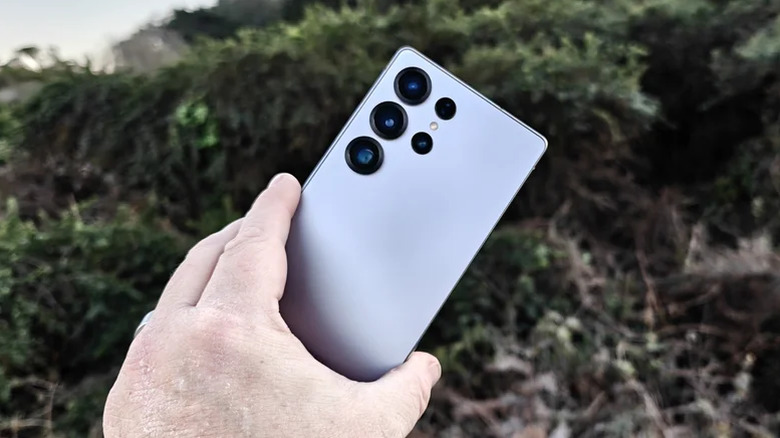 Adam Doud/SlashGear
Adam Doud/SlashGear
2020 marked the end of the Galaxy Note series, but this decision is what put Samsung's S Ultra series back on top. With an industry-leading display and a built-in S Pen, the $1,299 Galaxy S25 Ultra continues to represent the best of what Android has to offer. It gives tough competition to the iPhone 17 Pro Max, and has a feature set so vast that it puts flagships from other brands to shame.
In our review of the Galaxy S25 Ultra, we praised its refined design, capable hardware, and rock-solid camera performance. Samsung is also one of the few companies that know what it's doing with the AI features bundled with its software. Speaking of which, One UI continues to receive positive feedback from users who appreciate its customization-first approach.
For the technical folk, the S25 Ultra packs a 5,000 mAh battery that powers its mammoth 6.9-inch 1440p AMOLED display — all powered by the Snapdragon 8 Elite SoC. You get a quad-camera setup featuring a 200 MP wide-angle, a 50 MP ultrawide, and two telephoto lenses with 3x and 5x magnification. Sure, the device may lack the novelty of blazing-fast charging speeds or a display that refreshes at 165 Hz, but the Galaxy S25 Ultra remains a solid pick for those who want a big smartphone with a mature software experience and a camera system they can rely on.
2. OnePlus 13R
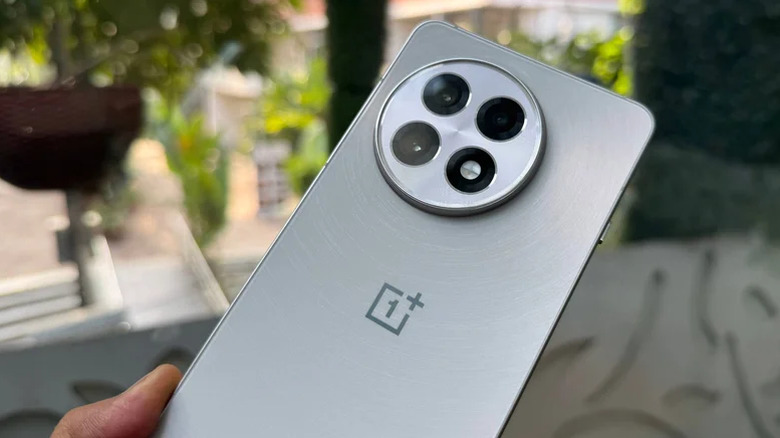 Nadeem Sarwar/SlashGear
Nadeem Sarwar/SlashGear
There are few brands as interesting as OnePlus in the smartphone space. The company started strong by offering flagship-level performance at a fraction of its competitors' costs, but a decade later, public sentiment says it no longer produces flagship killers. That may be true for the brand's top-end model, the OnePlus 15, but if you take a closer look at the upper-mid range OnePlus 13R, you can spot traces of DNA that made OnePlus such an easy recommendation back in the day.
The device is positioned right below this year's OnePlus 13 and deploys some intelligent cost-cutting to hit a retail price of just $599. This price seems a lot more impressive when you glance over the device's specifications — Snapdragon 8 Gen 3, 12GB of RAM, 256GB of base storage, and a big 6.78-inch 120 Hz AMOLED display. OnePlus' phones are also known for their industry-leading charging speeds. The 13R ships with an 80W charger in the box, which tops up the device's 6,000 mAh battery in less than an hour.
In our review of the OnePlus 13R, we did go over the few areas it has skimped out on — wireless charging, heat management, and a weaker Ingress Protection rating. However, these compromises fade into the background when you're able to get unmatched performance at this price point. OxygenOS continues to offer a snappy and feature-packed software experience on OnePlus smartphones, with a handful of useful AI tidbits thrown in.
3. Samsung Galaxy Z Flip7
 Framesira/Shutterstock
Framesira/Shutterstock
iPhones may still be the easiest smartphones to recommend, but they don't fold yet. We're now six generations deep into Samsung's foldable series, and the Galaxy Z Flip7 is a great example of how consistent hardware improvements over the years can add up. The device features a 120 Hz Super AMOLED edge-to-edge cover display — making it actually practical to use while shut off. When you do unfold it, you are greeted with another 120 Hz Super AMOLED display, measuring the same as the Galaxy S25 Ultra at 6.9 inches.
Confusingly, the Z Flip7 is the only Samsung flagship in the current lineup that doesn't ship with a Qualcomm Snapdragon chip. It's instead powered by Samsung's in-house Exynos 2500 SoC, which is better on paper than last year's Snapdragon 8 Gen 3 that the Z Flip6 featured. Performance is decent, as highlighted in TechRadar's review, but it doesn't quite match the Snapdragon 8 Elite that's found in the rest of the S25 lineup.
The phone retails at $1,100 and ships with a base RAM and storage combination of 12GB and 256GB, respectively. You get a dual-camera setup at the rear — or the front, depending on how you use it. This includes a 50 MP wide-angle lens, a 12 MP ultrawide lens, and a selfie camera on the inside screen. The Z Flip7 is powered by a 4,300 mAh battery with wireless charging support. It's also backed by Samsung's excellent software support for seven years.
4. Google Pixel 9a
Though Samsung phones have been prescribed as perfect alternatives to iPhones for years, Google's Pixel range of smartphones offers a fairer comparison if you're fighting the Android versus iOS battle in your head. After all, Google is the one that shapes how Android looks and feels every year. The Pixel a-series has always sold well in the budget segment, and this year's model continues to bring the best of Android in an essentials-only hardware package.
The Pixel 9a starts at $499, making it the most affordable Android phone on this list. It does cut some major corners in its design, but it still somewhat looks like part of the Pixel family. The phone is powered by Google's in-house Tensor G4 processor and comes with 8GB of RAM and 128GB of base storage. On the front, you have a 6.3-inch P-OLED display that refreshes at 120 Hz.
A few complaints we mentioned in our review of the Pixel 9a include noticeable bezels all around and an unimpressive build quality. For just $100 more, the OnePlus 13R blows the Pixel 9a's performance and battery life out of the park. However, it's still an attractive option for those who value a clean software experience and solid camera performance. We found the dual 48MP (wide) and 13MP (ultrawide) setup highly reliable, especially in low-light environments where many other mid-range smartphones seem to fall short. The Pixel 9a also offers seven years of software updates.
5. OnePlus 13
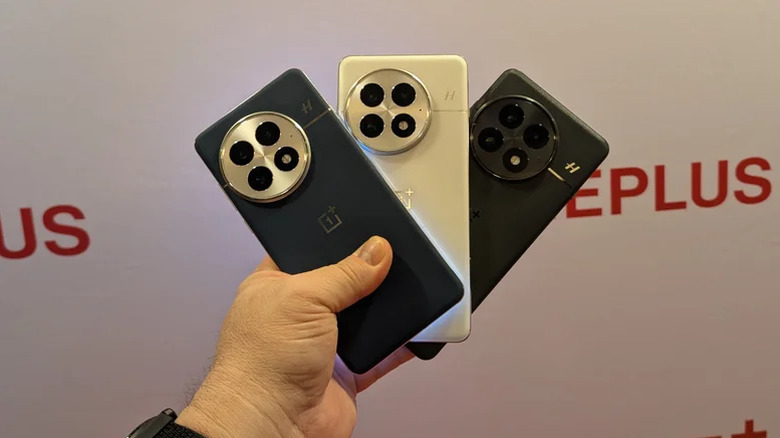 Adam Doud/SlashGear
Adam Doud/SlashGear
Ranked decently high in Consumer Reports' overall smartphone rating is the OnePlus 13 — the elder sibling to the 13R we've talked about. Though the recently launched OnePlus 15 offers performance upgrades, early reviews have highlighted its lackluster camera setup, which appears to be a downgrade from its predecessor. This technically makes the OnePlus 13 one of the best phones you can buy from the brand.
The device is powered by the Snapdragon 8 Elite SoC, 12GB of RAM, and a base storage configuration of 256GB. In usual OnePlus fashion, you can absolutely deck this thing out with up to 1TB of storage and 24GB of RAM. The phone features a triple 50 MP camera setup — wide, ultrawide, and a 3x telephoto lens. It comes with Hasselblad's color science, which is another omission in the OnePlus 15.
We talked about how OnePlus changes your relationship with your phone's battery in our review of the OnePlus 13. It packs a silicon-carbon cell that delivers an impressive 6,000 mAh of energy density. The phone comfortably lasts all day, and when you do need to plug it in, the bundled 100W charger comes in clutch. You also get up to 50W of wireless charging with an optional accessory purchase, though the phone is missing Qi2 support. The software experience is backed by the feature-rich yet snappy OxygenOS, with a handful of useful AI features, like reflection remover, sprinkled in.
